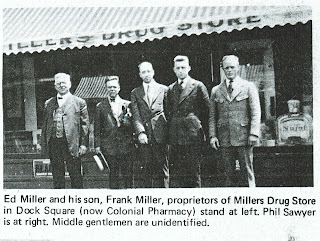A school has always been a valued part of the community. Rather than rehashing the history of public education here, I refer you to a good source on the subject. PBS has a great web site devoted to the story of public education in the U.S. and ran a four part series on the subject:
| http://www.pbs.org/kcet/publicschool/# |
A large goal for cultural heritage institutions should be to support the engagement of the community and to work with appropriate people in schools to support common interests. I have spent my career on the cultural heritage side, reaching out to schools and others to demonstrate what resources such institutions can share. I am now on the other side, but remain dedicated to the idea of promoting the value of museum, libraries and archives. To this end, in my role as a high school information specialist, I met this week with a member of the local historical society to discuss how we can collaborate to support each other. Upon initial discussions, this is what we may seek to do.
- Teaching - Support public education using resources from the historical society. An initial goal is to review sources at the historical society to see what information they have about our school so that we may prepare for an upcoming anniversary celebration. I hope to involve a school archives committee made up of students and teachers in the research process.
- Exhibiting - Provide the historical society with space for exhibits within our library that relate to school interests. This will support our curricula and allow the society to show off their collections and make stronger community connections.
- Outreach - Perform outreach to the community together to help support our anniversary project at the high school, to seek materials that support out mutual interests in caring for historical materials related to the community, and to support programming, events and more.
I have a long list of other ways we can build a relationship with our new historical society friends. This initial three pronged strategy can help build a base for cooperation, making everyone aware of the potential, avoiding stepping on anyone's toes, and remaining flexible and open about our needs, general ideas, and potential collaborative strategies.








